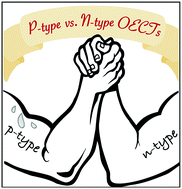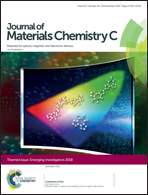n-Type organic electrochemical transistors: materials and challenges
Abstract
Organic electrochemical transistors (OECTs) have emerged as an enabling technology for the development of a variety of applications ranging from digital logic circuits to biosensors and artificial synapses for neuromorphic computing. To date, most of the reported OECTs rely on the use of p-type (hole transporting) conducting and semiconducting polymers as the channel material, while electron transporting (n-type) OECTs are yet immature, thus precluding the realization of advanced complementary circuitry. In this highlight, we review and discuss recent achievements in the area of n-type OECTs, in particular targeting recently reported n-type channel materials and how these have enabled a considerable advancement of OECT circuit capabilities. Further, the critical challenges currently limiting the performance of n-channel OECTs are summarized and discussed, setting material design guidelines for the next generation n-type and complementary OECTs.

- This article is part of the themed collections: Recent Review Articles and Journal of Materials Chemistry C Emerging Investigators


 Please wait while we load your content...
Please wait while we load your content...